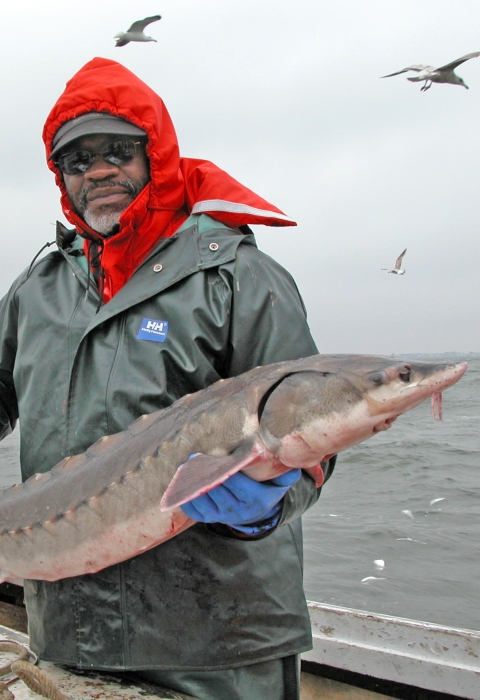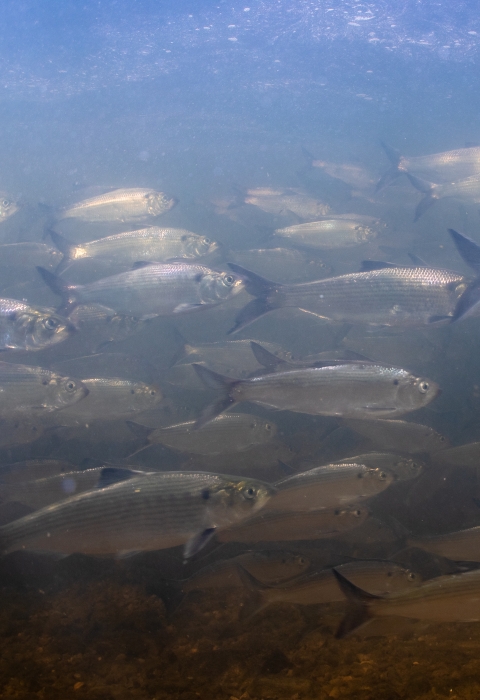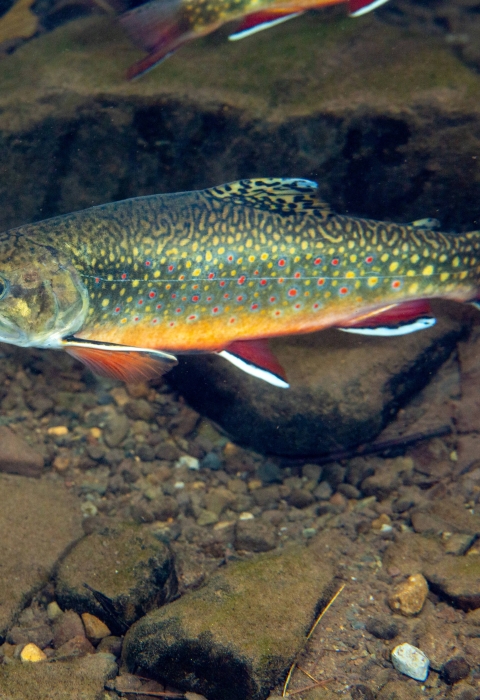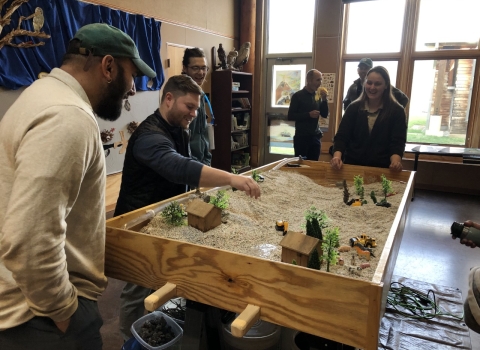What We Do
We help assess, plan, and conduct habitat restoration, including removing dams and replacing road-stream crossings and culverts with structures that are resilient to high water flows and allow better fish passage fish passage
Fish passage is the ability of fish or other aquatic species to move freely throughout their life to find food, reproduce, and complete their natural migration cycles. Millions of barriers to fish passage across the country are fragmenting habitat and leading to species declines. The U.S. Fish and Wildlife Service's National Fish Passage Program is working to reconnect watersheds to benefit both wildlife and people.
Learn more about fish passage at all times of the year.
Our office provides support and technical assistance to state, tribal, and federal agencies, watershed groups, and private landowners on:
- evaluating fish passage at road-stream crossings
- developing recommendations for removing or replacing road-stream crossings and culverts with structures that are resilient to flooding and allow better movement of fish.
- developing habitat restoration and species monitoring projects
- securing financial assistance for habitat restoration through the National Fish Passage and National Fish Habitat Partnership programs
- assessing status of migratory fish like Atlantic sturgeon, alewife, and blueback herring, as well as invasive species invasive species
An invasive species is any plant or animal that has spread or been introduced into a new area where they are, or could, cause harm to the environment, economy, or human, animal, or plant health. Their unwelcome presence can destroy ecosystems and cost millions of dollars.
Learn more about invasive species like the snakehead - using new eDNA sampling methods for detecting and monitoring aquatic species
We also collaborate with others on outreach and education with youth and their families on the unique natural resources of Virginia, such as native brook trout, Atlantic sturgeon, and freshwater mussels, and Virginia’s amazing network of rivers, streams and wetlands which are vital to fish and wildlife, and humans.
Management and Conservation
We work with private landowners and others to improve aquatic connectivity for migratory and inland fishes, and restore stream and wetland habitats for fish and wildlife. We leverage funds and resources through efficient state, federal and private partnerships to accomplish shared habitat restoration goals.
Our Projects and Research
The Service’s National Fish Passage Program provides funding as well as engineering support for habitat restoration projects. The Eastern Brook Trout Joint Venture and the Atlantic Coast Fish Habitat Partnership also help support habitat restoration in Virginia with funding and technical support coordinated through this office.
Since 1999, our office and our partners have removed over 25 barriers to fish passage fish passage
Fish passage is the ability of fish or other aquatic species to move freely throughout their life to find food, reproduce, and complete their natural migration cycles. Millions of barriers to fish passage across the country are fragmenting habitat and leading to species declines. The U.S. Fish and Wildlife Service's National Fish Passage Program is working to reconnect watersheds to benefit both wildlife and people.
Learn more about fish passage , and opened over 1800 miles of rivers. These efforts will contribute millions of dollars in economic value to Americans every year, through increased tourism, fishing, and recreation. These projects also improve water quality, increase safety for people recreating in rivers, and protect public and private property from impacts of flooding.
Across the landscape, undersized, aging and improperly placed road-stream crossings create barriers in our rivers, streams, and tidal wetlands. These structures fragment aquatic habitat and prevent or greatly reduce the ability of aquatic species to move freely to migrate, feed, and reproduce. These poorly designed structures are also more prone to clogging, causing flooding, and washing out...



